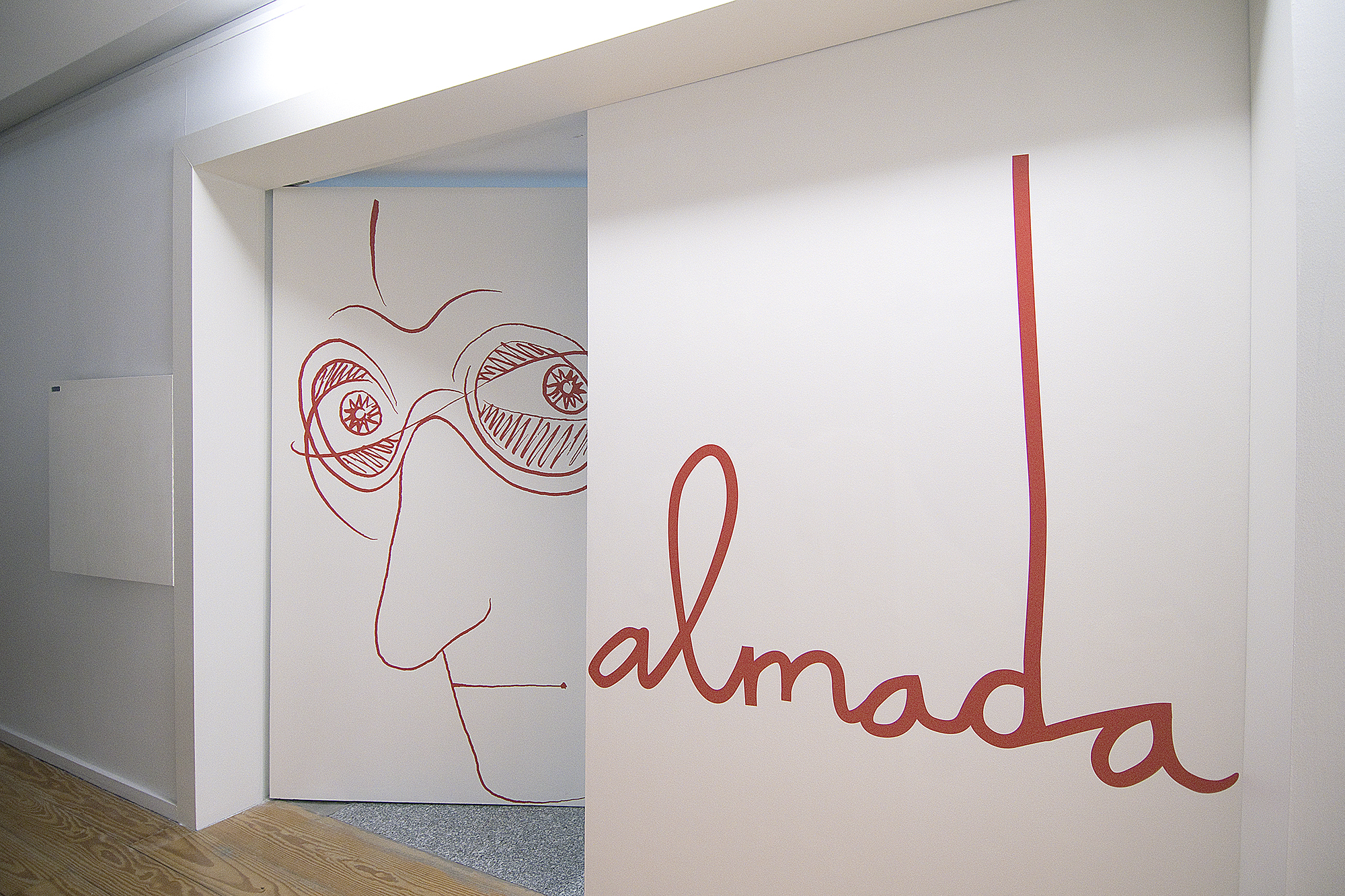Born on April 7th 1893, Almada Negreiros was one of the leading figures of the first generation of Portuguese modernism. He started out as a caricaturist, but it was primarily as a poet that he took part in Lisbon’s Futurist movement.
In 1915, he took part in the genesis of a landmark magazine for Portuguese literature – the Orpheu magazine – with which he collaborated, alongside Fernando Pessoa, Mário de Sá-Carneiro, Amadeo de Souza Cardoso and other names in literature and the arts.
Essentially self-taught (he didn’t attend any art school), his precociousness led him to devote himself to humour drawing from an early age. But the notoriety he acquired at the start of his career is primarily associated with his writing, whether it be interventionist or literary.
In 2017, the Soares dos Reis National Museum, in collaboration with the Calouste Gulbenkian Foundation, hosted the exhibition “José de Almada Negreiros: drawing in motion“. Curated by Mariana Pinto dos Santos, the exhibition brought together 90 artworks revealing the importance of cinematographic language in his artistic work.
Several of the artworks selected were initially in the exhibition “Almada Negreiros. A Way of Being Modern” which, at the beginning of that year, occupied various spaces in the Gulbenkian Museum and the Foundation’s programme in Lisbon.
In the majority of Almada Negreiros’ work, his desire to tell stories with images is clearly visible, many of them with hints of humour, both in series of drawings and in works integrated into buildings and even tapestries. Fascinated by the possibility of bringing drawings to life and putting them in motion, Almada Negreiros often intended to experiment with animation but never realized his wish.
The combination of cinema and drawing appears in works such as the magic lantern La Tragedia de Doña Ajada (1929) and the drawn film O Naufrágio da Ínsua (1934), works specifically designed for public presentations on cinema screens, real or imagined. The hybridity between drawing and cinema is also expressed in some of his literary, poetic and essayistic texts, where both plastic and cinematographic intersections can be seen.
“José de Almada Negreiros: drawing in motion” was on display at the Soares dos Reis National Museum between the 30th of November 2017 and the 18th of March 2018.

